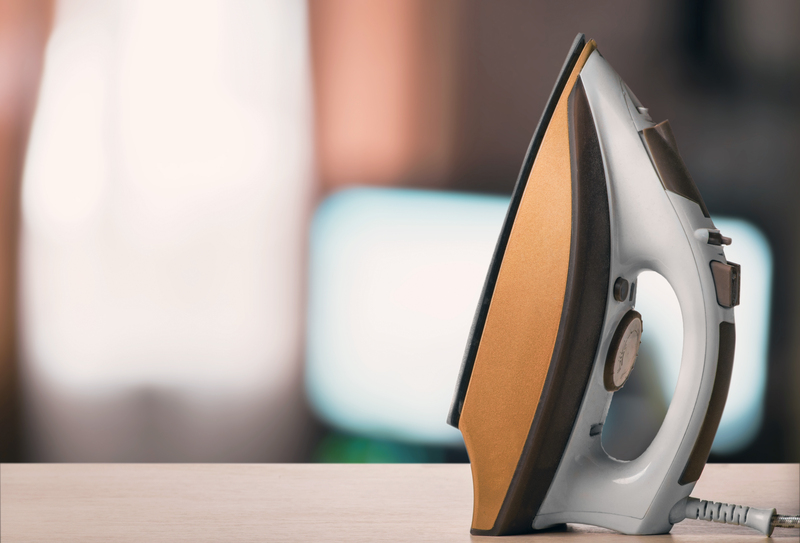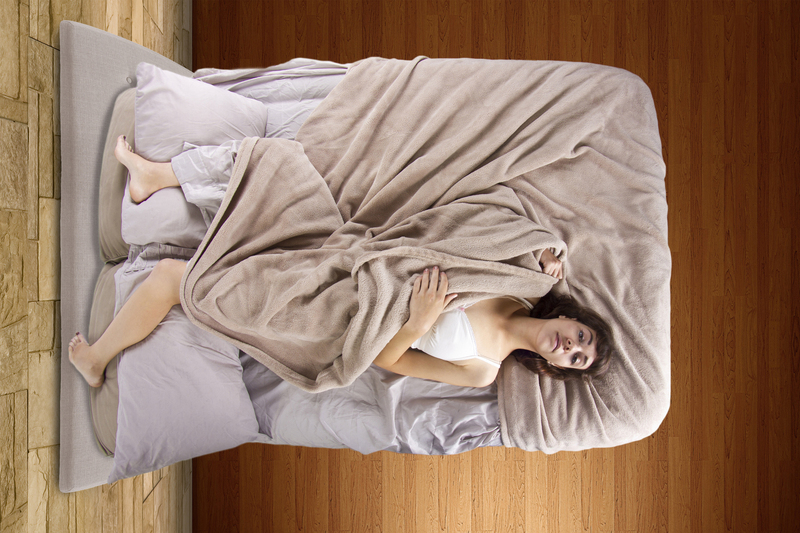Elevate Your Environment to Dust-Free, Allergen-Reduced Heights
Posted on 19/06/2025
Elevate Your Environment to Dust-Free, Allergen-Reduced Heights
In today's fast-paced world, spending time in clean, fresh surroundings is more important than ever. The pursuit of a dust-free, allergen-reduced environment isn't just a trend--it's a necessity for better health, well-being, and productivity. If you're ready to elevate your space and discover the benefits of an allergy-friendly lifestyle, this comprehensive guide is here to help. Learn the proven strategies, modern solutions, and expert tips to create and maintain an atmosphere that significantly reduces dust and allergies.
Why a Dust-Free and Allergen-Reduced Environment Matters
Airborne allergens and dust particles can compromise respiratory health, trigger allergies, and diminish overall quality of life. From persistent sneezing to aggravated asthma, the drawbacks of a dusty, allergen-laden space are plenty. Let's examine why it's crucial to minimize dust and allergens in your home or workplace:
- Improves Air Quality: Clean, allergen-reduced air supports easier breathing and reduces the risk of respiratory problems.
- Enhances Sleep Quality: Eliminating allergens promotes deeper, uninterrupted sleep.
- Boosts Immunity: By reducing exposure to irritants, your immune system can operate at its best.
- Supports Mental Clarity: Clean spaces lower stress and increase focus.
- Protects Vulnerable Groups: Babies, elderly, and those with allergies or asthma benefit the most from a dust-free environment.
Main Sources of Dust and Allergens Indoors
To elevate your environment successfully, it's vital to understand where indoor dust and allergens come from:
- Outdoor Particles: Pollen, mold spores, and pollution enter through windows, doors, and clothing.
- Textiles: Carpets, curtains, and furniture fabrics trap dust mites, pet dander, and more.
- Human and Pet Activity: Shedding skin cells, hair, and pet fur are major contributors.
- HVAC Systems: Poorly maintained vents circulate dust and allergens.
- Household Products: Cleaning supplies and air fresheners can release irritants into the air.

Top Strategies to Elevate Your Space and Reduce Allergens
Embrace these effective, science-backed strategies to transform your home or office into a dust-free, allergen-minimized sanctuary:
1. Enhance Air Filtration and Ventilation
- HEPA Filters: Install High-Efficiency Particulate Air (HEPA) filters in your central HVAC system, portable air purifiers, and vacuum cleaners. These can capture up to 99.97% of particles as small as 0.3 microns, effectively trapping dust, pollen, and pet dander.
- Regular Ventilation: Open windows and use exhaust fans to replace stagnant indoor air with fresh outdoor air--ideally during low pollen times.
- Dehumidifiers: Maintaining indoor humidity below 50% helps prevent the growth of mold and dust mites.
2. Establish a Robust Cleaning Routine
- Frequent Dusting: Use microfiber cloths or damp rags to trap and remove dust instead of just moving it around.
- Vacuum Twice Weekly: Choose vacuums with sealed HEPA filtration systems for maximum dust removal, especially on carpets, bedding, and upholstery.
- Wash Bedding in Hot Water: Wash sheets, pillowcases, and blankets weekly to eliminate dust mites and keep allergens at bay.
- Minimize Clutter: Cluttered spaces collect more dust. Store items in closed cabinets or boxes to create a cleaner, sleeker look.
- Mop Hard Floors: Use a damp mop regularly on hardwood, tile, or laminate floors to remove particles that sweeping can stir up.
3. Choose Allergy-Reducing Materials and Furnishings
- Smooth Surfaces: Favor hard surface floors over carpets and rugs where possible for easier cleaning.
- Washable Curtains and Covers: Opt for washable textiles, and clean them monthly.
- Allergen-Proof Bedding: Invest in encasements for pillows, mattresses, and duvets to block dust mites.
- Leather or Vinyl Furniture: These materials don't trap allergens the way fabric does, making them ideal for allergy-friendly environments.
4. Manage Pets Responsibly
- Regular Grooming: Bathe and brush pets frequently to reduce dander and shedding.
- Dedicated Pet Areas: Keep pets out of bedrooms and off upholstered furniture to minimize allergen spread.
- HEPA Air Purifiers: Use air purifiers in rooms where pets spend the most time.
5. Address Hidden Dust Traps
- Behind Furniture: Move heavy furniture and clean behind/under it at least once a month.
- Air Ducts and Vents: Schedule annual professional cleanings to prevent dust build-up.
- Electronics: Wipe down computers, TVs, and game consoles, which attract dust with static electricity.
Specialized Products to Reduce Dust and Allergens
Innovative products are designed to help you elevate your space to a dust-free, allergen-reduced environment more efficiently:
- Allergy-Proof Covers: Hypoallergenic mattress and pillow encasements block dust mite access.
- Air Purifiers: Portable purifiers with true HEPA filters are ideal for bedrooms, offices, or wherever additional purification is desired.
- Robotic Vacuums: These keep floors clean with minimal effort, making frequent dust removal easy.
- Humidity Monitors: Use these devices to gauge indoor humidity levels, ensuring mold and dust mites don't thrive.
Eco-Friendly and Non-Toxic Cleaning Alternatives
For those sensitive to chemicals, green cleaning solutions offer an effective way to keep your environment elevated and healthy:
- Use white vinegar and water for general surface cleaning.
- Sprinkle baking soda on carpets and upholstery for natural deodorizing before vacuuming.
- Lemon juice cuts grease and leaves a fresh scent.
- Essential oils, such as tea tree and lavender, have natural antimicrobial properties (use sparingly and test first).
Long-Term Habits for an Allergen-Reduced, Clean Home
Consistency is crucial for ongoing dust and allergen control. Adopt these daily and weekly habits to keep your environment at its healthiest:
- Remove shoes at the door to prevent tracking in dust and pollen.
- Shower and change clothes after outdoor activities to keep allergens out of your living space.
- Keep windows closed during high pollen days.
- Check and replace air filters every 2-3 months.
- Monitor for mold in damp areas like basements and bathrooms.
Allergy-Proofing for Specific Rooms
Bedroom
- Encapsulate pillows and mattresses.
- Avoid heavy drapes; use blinds or washable curtains.
- Keep pets out entirely if possible.
Living Room
- Vacuum furniture and carpets regularly.
- Reduce knick-knacks and decorative pillows.
- Dust electronic equipment with microfiber cloths.
Kitchen & Bathroom
- Fix leaks promptly to avoid mold.
- Use exhaust fans when cooking and bathing.
- Regularly empty and clean trash bins.
Professional Solutions for Severe Allergen Issues
For severe allergies or chronic respiratory concerns, consider:
- Professional Duct Cleaning: Removes accumulated dust and allergens in HVAC systems.
- Carpet and Upholstery Cleaning: Annual deep cleaning extracts embedded allergens.
- Consultation with Allergists: Personalized advice and possible prescription solutions for uncontrollable allergens.
The Benefits of a Dust-Free, Allergen-Minimized Environment
By making a commitment to elevate your environment to dust-free, allergen-reduced heights, you'll notice benefits such as:
- Increased comfort and fewer allergy symptoms.
- Cleaner-looking, more inviting spaces for family and guests.
- Lower maintenance needs over time due to less dust accumulation.
- Prolonged lifespan for electronics and furnishings, which can suffer from dust build-up.
Whether you suffer from seasonal allergies, asthma, or simply wish to optimize your living conditions, the steps laid out above provide an actionable path forward.

Popular Myths About Dust and Allergen Control
- Myth: "You only need to vacuum occasionally."
Reality: Regular, HEPA-filtered vacuuming is required to significantly reduce dust and allergens. - Myth: "Air fresheners clean the air."
Reality: Many contain chemicals that can aggravate allergies and do not actually filter or trap particles. - Myth: "Allergies only come from outside."
Reality: Indoor allergens--including dust mites, pet dander, and mold--are often the main triggers.
Conclusion: Your Roadmap to a Healthier, Cleaner Environment
Ready to take action and elevate your environment to new dust-free and allergen-reduced heights? It's more achievable than you think. By combining smart cleaning routines, air purification technology, and mindful daily habits, you can transform your space into a true wellness haven.
Start with one room, invest in top-quality air filtration, and build consistent cleaning practices--it's a journey with life-long benefits. Embrace these tips and experience the remarkable difference a truly clean, allergen-minimized environment can make.
Your path to a healthier home starts today. Breathe easier, live better, and thrive in your newly elevated space!
```




